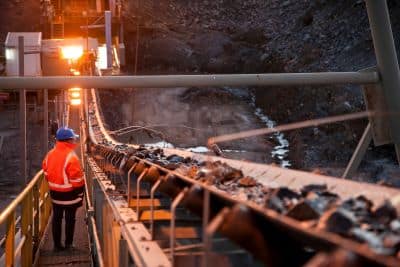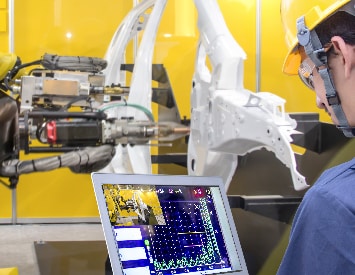Step into the future of mining as robotics revolutionizes the industry, revealing groundbreaking use cases, navigating through challenges, and witnessing the unwavering ingenuity of engineers.
The mining industry is a crucial cornerstone of global development, providing raw materials that fuel various products and industries.
However, mining operations come with inherent dangers and significant expenses, compounded by challenges such as underground mining and harsh environmental conditions.
In recent years, introducing robotics has offered a promising solution, transforming mining into a safer, more efficient, and cost-effective industry.
Read on as we explore the applications, benefits, and challenges of robotics in mining, focusing on engineers’ vital role in overcoming these obstacles.
Benefits of Robotics in Mining
Environmental Benefits: Integrating robotics in mining operations brings significant environmental advantages. Robotic systems optimize routes, reducing fuel consumption and emissions. Furthermore, their precise execution of tasks minimizes material wastage, thereby reducing overall environmental impact.

Improved Safety: Robotics mitigate the risks associated with mining operations by significantly reducing the potential for accidents and injuries. Autonomous vehicles and robotic equipment can operate effectively in hazardous environments, such as underground mines, alleviating the need for human operators to expose themselves to danger.
Increased Accuracy: Robotic equipment outperforms human operators in terms of accuracy, enhancing the overall quality of mining operations. For example, robotic drilling equipment can achieve superior precision and consistency, improving the efficiency and effectiveness of the drilling process.
Greater Efficiency and Cost Reduction: Robotic systems perform tasks faster and more efficiently, resulting in improved productivity and reduced costs. Autonomous vehicles, capable of operating 24/7, eliminate the need for shift changes and maximize output. Additionally, labor costs decrease as robotics minimizes the reliance on human operators. Optimized routes and reduced unnecessary movement also lowered fuel consumption and maintenance expenses.
Use Cases of Robotics in Mining
Autonomous Mining Vehicles: Autonomous mining vehicles represent one of the industry’s most significant applications of robotics. These vehicles operate without human drivers, reducing the risk of accidents and enhancing productivity. They excel in harsh environmental conditions, including extreme temperatures and dust, allowing them to navigate and operate efficiently.
Example: Rio Tinto, a leading mining company, has successfully employed autonomous trucks since 2008. These vehicles have significantly improved productivity, operating round the clock while minimizing accidents. Rio Tinto’s development of autonomous drilling systems has further advanced accuracy and efficiency in remote drilling operations.
Robotic Mining Equipment: Another key application of robotics in mining is using robotic mining equipment. These machines can be remotely controlled or operated autonomously, undertaking drilling, blasting, and excavating tasks.
Example: Sandvik, a Swedish engineering company, has pioneered the development of robotic mining equipment, including remote-controlled drill rigs and loaders. These machines excel in hazardous environments such as underground mines, surpassing human operators in speed and efficiency.
Inspection and Maintenance Robots: Robotic inspection and maintenance systems play a vital role in ensuring the safety and reliability of mining operations.
These robots conduct thorough inspections of equipment and infrastructure, reducing the need for human involvement and enhancing overall safety.
Example: ABB, a Swiss-Swedish multinational corporation, has successfully developed inspection robots tailored for mining operations.
These robots traverse pipes and tunnels to inspect them for damage and wear, reducing the risk to human inspectors and improving safety standards.
Challenges and Limitations of Robotics in Mining
While robotics presents numerous benefits for the mining industry, several challenges and limitations persist. These include the high initial investment costs and the need for specialized expertise in robotics and artificial intelligence.
Mining companies must consider the financial implications and seek collaborations with experts to leverage the potential of robotics fully.
Role of Engineers in Overcoming Challenges
Engineers play a pivotal role in overcoming the challenges and limitations robotics face in the mining sector. They develop ruggedized robotic platforms capable of withstanding extreme mining conditions.
Engineers implement protective measures, such as reinforced casings, sealing mechanisms, and advanced cooling systems, to safeguard delicate electronic components.

Engineers also tackle navigating and localizing robots in complex mining environments, including underground mines.
They leverage technologies like LiDAR (Light Detection and Ranging), inertial navigation systems, and advanced mapping algorithms to enable precise localization and safe navigation.
Furthermore, engineers continually analyze and improve the algorithms and control systems used in robotic mining operations, enhancing the decision-making capabilities of robots through machine learning, AI, and data analytics.
Positive Outlook Despite Challenges
Integrating robotics into the mining industry presents immense potential for safer, more efficient, and cost-effective operations. The industry is witnessing transformative advancements through autonomous vehicles, robotic mining equipment, and inspection and maintenance robots.
While challenges remain, including initial costs and specialized expertise requirements, engineers play a crucial role in overcoming these obstacles. Their expertise in developing robust systems, optimizing efficiency, and enhancing safety ensures that the mining industry can fully harness the benefits of robotics.
With ongoing innovations, robotics continues to revolutionize mining, unlocking its potential for increased productivity, improved safety, and sustainable practices.
References
Robotics innovation: Leading companies in mine inspection robots


